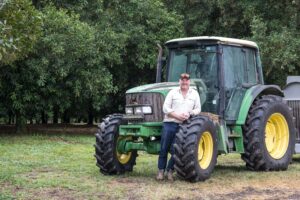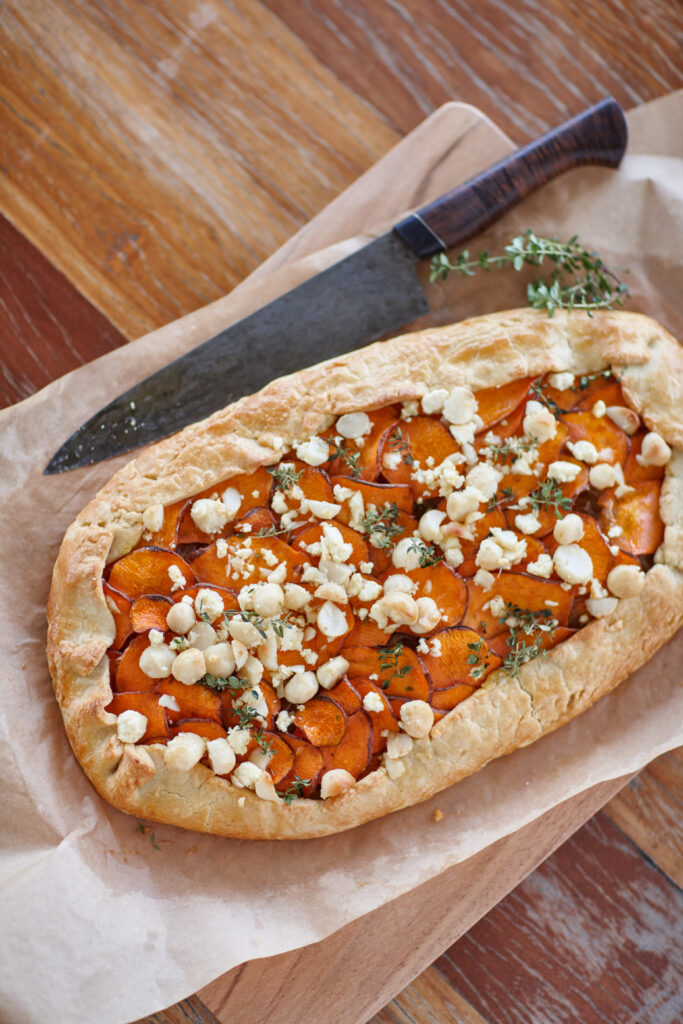Get the most from your backyard macadamia tree with these handy tips and solutions for common issues.
There’s nothing worse than a macadamia tree that doesn’t produce nuts! If your backyard macadamia tree is unproductive or looking a little under the weather, this guide can help you decide exactly what the problem is and how to fix it.
My macadamia tree has no nuts
The problem may be:
- Climate: When planted in colder areas, macadamias may act as a shade-giving ornamental, but may not produce flowers or fruit well.
- No pollinators: Macadamia trees are not particularly self-fertile and need insects like bees to pollinate them. If there are no obvious bees, you may not get many nuts so be sure to plant lots of bee friendly plants in your garden.
- Birds: Galahs and cockatoos love macadamia nuts as much as humans, so you might find that they eat your harvest before you can!. We suggest using bird netting on smaller trees. For trees that are too big for nets we suggest scare tactics. Shiny silver items like CDs hanging in the tree can deter birds, as can loud noises.
- Rodents: Rats can steal nuts away, especially if you live in an area close to bushland. Get a pest company to install professional bait stations around the base and tied to branches in the shadier parts of the tree. If you don’t want to use bait, you might need to get a cat or a dog that is a good ratter.
To ensure your tree has plenty of nuts, make sure you encourage healthy roots. Macadamias are rainforest trees and their shallow roots thrive with lots of organic material and leaf litter under the trees, just like you would find on a rainforest floor.
My flowers don’t turn into nuts
The problem could be:
- Rain: A downpour at the time of flowering can wash away the pollen and prevent nut set.
- Drought: It may be so dry the flowers wilted. You can prevent this by watering the tree as soon as the green strands of forming flowers appear.
- Pests: A pest could be eating the flowers. For small trees you can try a pyrethrum spray, but for larger trees there is little you can do besides encouraging beneficial predatory insects through planting diverse species in your garden.
Try adding composted animal manure, household food scraps or a fertiliser designed for Australian natives to the ground below the tree, and water in well.

My tree is too big
- Pruning is a good way to manage the size of your tree. Left unpruned, trees can grow up to 10m over several decades. First remove any dead or unhealthy branches, then remove any that are growing inwards or in an unwanted direction. Finally, cut to the shape and size you want.
- An open tree will also allow precious sunlight all through the canopy and improve growth and pollinator visits.
- Always make a clean cut and use a clean pruning saw or secateurs. If the stump is more than 5 centimetres, it may be worth using a commercial wound dressing.
- The best time to prune is in winter after harvesting the nuts, but it can be done at any time.
- Regular pruning will stop the tree from getting too large again.
My tree is too small
- If you live in an area where the annual rainfall is less than 800-1000mm you may need to water during dry times to encourage growth. While macadamias need water, they don’t like wet feet for extended periods. If the soil around the tree is too boggy then roots and soil microbes don’t get enough air.
- Like most plants, macadamias will do better with the addition of fertiliser. Twice a year, in autumn and spring, add up to 1kg (depending on tree size) of a fertiliser for Australian native plants to the ground under the tree out to the drip line. Water in well. Alternatively, use any well-made garden compost or horse or cow manure. Avoid chicken manure unless it is very well aged.
- If you get frost, protect the tree trunk for the first 3 or 4 years after planting to stop it stunting.
- They will grow in a wide range of soils, but if your soil is sandy we would recommend adding lots of composted organic matter to encourage your tree to thrive.

My nuts are falling
- This can be good news! Macadamias will fall to the ground when they are mature. Nuts are living seeds and are susceptible to spoil if left on the ground too long after they drop. They are freshest if collected within a few weeks after they have fallen.
- If you find that nuts are dropping when they are very small, this could be very normal, natural thinning occurs when the nuts are about pea to marble-sized, up to 90% of set nuts may fall. No treatment is required for this natural nut thinning, but it will be worse if the tree is drought stressed.
- Nut borer and other insects that feast on macadamias can also cause premature nut drop when they damage the husk (see below).

I have no kernels in my nuts
- Nut borer: This is another common pest for macadamia trees. The macadamia industry has developed a chemical-free way to deal with the problem. We use trichogramma wasps to eat the nut borer larvae. You can order these wasps from bioresources, who send them via the mail. However, be patient. These may take a season to be effective as they attack the nut borer eggs rather than the adult borer. Alternatively you could remove all the nuts for a season to take away the borer’s laying sites. Pyrethrum sprays are not often effective against borers.
Got a question about your backyard macadamia tree? Send it to our friendly team and we will see if we can help.












